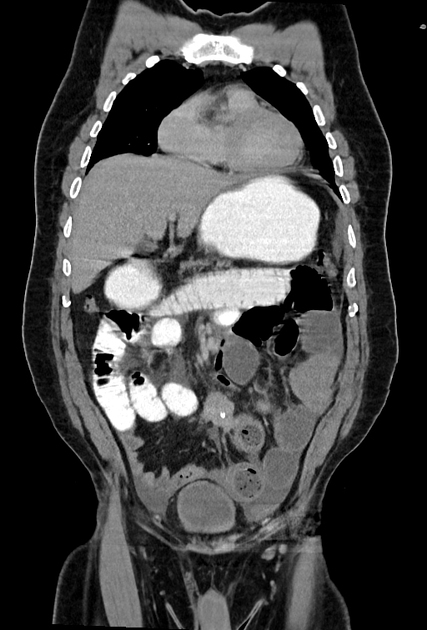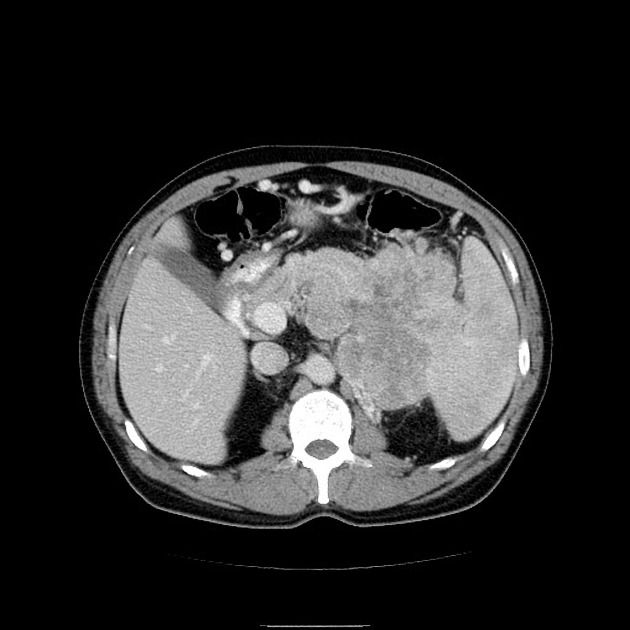Neuroendocrine tumors (NETs) (historically called APUDomas) represent a wide spectrum of disease. They consist of a large heterogeneous group of malignancies that are derived from embryonic neural crest tissue found in various organ such as the hypothalamus, pituitary gland, thyroid gland, adrenal medulla, and gastrointestinal tract.
The spectrum of neuroendocrine tumors range from:
carcinoid tumor: arising from enterochromaffin cells and can occur at various sites such as thymus, lung, ovary
pheochromocytoma: typically occurs in the adrenals but can also occur in extra-adrenal sites
-
location dependant entities
-
abdomen
thorax/lung: pulmonary neuroendocrine tumors
-
endocrine glands
pituitary: pituitary neuroendocrine tumor (pituitary adenoma)
thyroid: medullary thyroid tumors
-
Pathology
They can also be divided by their biochemical behavior as functioning or non-functioning, by their aggressiveness as slow-growing and more aggressive lesions and so on.
Because of secretory products by amine precursor uptake and decarboxylation (APUD) they were historically known as APUDomas.
Genetics
Mostly occur sporadically, some are linked to multiple endocrine neoplasia syndromes.







 Unable to process the form. Check for errors and try again.
Unable to process the form. Check for errors and try again.